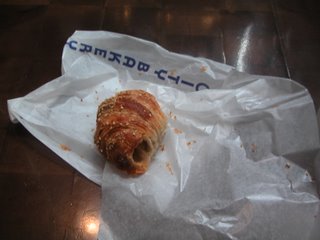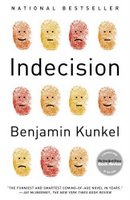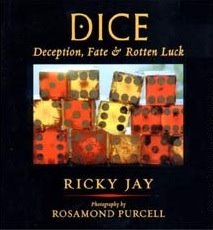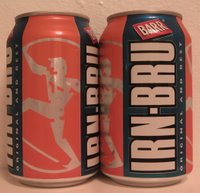The Plight of the Chevrolet Vega
 An odd to place to read about cars, the New York Times is, yes, but I found a delightful deposit of detritus, a frightful fount of four-wheeled folly, in a section that gives brief and cruel profiles of the likes of the Cadillac Cimarron and the Chevy Vega.
An odd to place to read about cars, the New York Times is, yes, but I found a delightful deposit of detritus, a frightful fount of four-wheeled folly, in a section that gives brief and cruel profiles of the likes of the Cadillac Cimarron and the Chevy Vega. In an era when mass-produced American muscle cars have increased in value to rare Italian supercar prices (as the Times reports here, a 1970 Plymouth Hemi 'Cuda convertible went for $2.2 million at auction last winter.), the Chevy Vega, which the Times quips "sent a generation of Americans rushing to Toyota and Datsun dealerships," has been a lousy investment:
"An orange '76 hatchback, sold at a Minneapolis auction last fall for $6,405, may have been the world's best-kept example. It had just 9,953 miles on the odometer.So sad. Cars like the Vega and the Cavalier (the compact Chevy of which the Cadillac Cimarron was a badly masked incarnation) were America's answer to affordable foreign compacts in the era of oil crisis. Nearly every one of them, whether they were from Chevrolet, Ford, Chrysler, or AMC, was a bad idea.
"One Vega with enthusiast appeal was the 1975 model that had a twin-cam engine from Cosworth, the British racecar engineers. Just 2,061 Cosworth Vegas were built. Thinking "instant collectible," some buyers immediately tucked theirs away; their $6,000 investment has soared to about $7,000 today."
Europe had designed small cars for small roads and dense cities. America built its cars for long distances and big roads. When we were suddenly forced to scale back on fuel consumption, the cars we designed to cope with the oil crisis looked and performed as panic-stricken as America must have felt.
The editors of Edmunds.com give a little history of Chevrolet's small cars from the 1960 Corvair (which Ralph Nader made his name exposing in his book Unsafe At Any Speed in the 60s) to the current Chevy Cobalt.
Of the Vega, they write:
"While it's tough to call a car that sold relatively well a commercial failure, the Vega never sold as well as did the Ford Pinto. And even though the Pinto was a legal disaster for Ford, it was never as achingly fragile as the Vega. The Vega was so notorious for engine failures and for rusting badly that junkyards in Southern California would put up signs with two words: 'No Vegas.'"They add that so many Vegas decomposed on account of rust, that you're more likely to see a Ferrari on the road. "But," they add, "just because Vegas are rare doesn't mean they're desirable." Ouch.
Still, there are collectors. On the website for the Cosworth Vega Owner's Association, members selling their Vegas give the manufacturer numbers in their ads. David Dempsey of Muncie, Indiana is asking $1,850, firm, for Vega #1121, which he describes as "very restorable." Rodney Edwards in Cocoa, Florida wants $4,500 for Vega #454. Some enthusiasts put V-8s in them.
Forbes did an article chronicling "The Worst Cars of All Time", which, naturally, featured the Vega. Clarence Ditlow of the Center for Auto Safety in Washington, D.C. clarifies the terms:
"People pick on a vehicle like the Yugo, which was just a generic lemon. The Ford Pinto was a safety lemon. The Chevrolet Vega was an engineering lemon. The Edsel was a styling lemon."In the accompanying slide show, Forbes writers note that during GM's initial track testing, the Vega's front end kept breaking off from the rest of the car.
The cackling idiots who host NPR's Car Talk awarded the Vega second place for their "Worst Car of the Millenium" contest (the Yugo was first. The Cadillac Cimarron was eighth). Among the commentary was a note about the Vega's structural integrity: "My Chevy Vega actually broke in half going over railroad tracks. The whole rear end came around slightly to the front, sort of like a dog wagging its tail."
When the Vega came out, they actually gave them away. In the very first episode of The Price is Right (September 4, 1972), Bob Barker presented the winner with "a nee-eeww-ww car!" -- a blue Vega wagon. The creator of the television fan website Jump the Shark wondered why Let's Make a Deal never gave away Chevy Novas or Caprice Classics. "I just wonder how many winners of Chevrolet Vega cars (awarded by the truckload from 1971-1977) actually were happy with their prize," he writes.
Today, Vega fans find their pleasures fleetingly. In a website dedicated to hot-rodding GM's H-body cars (the Vega, Monza, Astre, Sunbird, Starfire, and Skyhawk), aficionados list movie sightings -- many of them only incidental:
- Karate Kid: Vega and Monza in parking lot of arcade
- Raising Arizona: had a scene where a nice yellow Monza was seen parked, during the nighttime car chase
- Forrest Gump: Forrest gets up from the bus stop bench to walk to Jenny's and passes a very nice green 76 Vega
 There are more. Perhaps the proudest Vega sighting in filmdom, one that I remember, was the scene in Contact, the Jody Foster movie about an astronomer who discovers intelligent signals from a star called Vega. There is a scene in the movie where, after news of Vega's messages hit the public, a Chevy Vega car club shows up in the New Mexico desert to join the curious hundreds who want to be a part of alien contact history.
There are more. Perhaps the proudest Vega sighting in filmdom, one that I remember, was the scene in Contact, the Jody Foster movie about an astronomer who discovers intelligent signals from a star called Vega. There is a scene in the movie where, after news of Vega's messages hit the public, a Chevy Vega car club shows up in the New Mexico desert to join the curious hundreds who want to be a part of alien contact history.Labels: cars





















